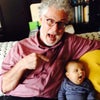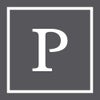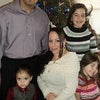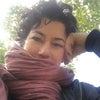The Lawrence Hall of Science is a public science center that offers hands-on science exhibits, designs curriculum, aids professional development, and offers after school science resources to students of all ages. The Hall was established in 1968 in honor of Ernest Orlando Lawrence, the University of California's first Nobel laureate. The Hall is located in the hills above the University of California, Berkeley campus, less than a mile uphill from the University's Botanical Garden.
In addition to its permanent exhibits, the Lawrence Hall of Science features a constant rotation of traveling exhibits. Past traveling exhibits include: Tony Hawk Rad Science, Dinosaurs Unearthed, Scream Machines: The Science of Roller Coasters, RACE: Are We So Different?, Facing Mars, Animal Grossology, Waterworks, Engineer It, Speed, Wild Music: Songs and Sounds of Life, Circus! Science at the Big Top, Grossology, My Home, Planet Earth, Big Dinos Return, Candy Unwrapped, and Math Midway.
In 2003, following the death of Lawrence’s widow, Molly Lawrence, the Lawrence family chose the Lawrence Hall of Science to house his 1939 Nobel Prize in Physics. The medal was placed in a display case in the E.O Lawrence Memorial room, a permanent exhibit which has displayed artifacts of his life and work for nearly forty years.
On March 1, 2007 a member of the Lawrence Hall of Science Exhibits staff reported that the Nobel Prize medal was missing from its locked display case. The UC Police Department was notified immediately and began an investigation on the medal’s theft. A $2,500 award was offered in exchange for the medal’s recovery and information leading to the arrest and conviction of the suspect. The medal is made from 23 karat gold and worth approximately $4,000. Lawrence's medal was the first Nobel prize awarded to the University of California and the first Nobel prize won by an American public university. The prize was recovered and a student was arrested on suspicion of grand theft. A replica of the Ernest Lawrence Nobel Prize now resides in the museum display case.
The Lawrence Hall of Science develops interactive planetarium shows for its own planetarium and other small planetariums, and offers regular public stargazing programs at the Hall every first and third Saturday of the month (weather permitting). The planetarium was built in 1973 and directed by Alan Friedman. The Holt Planetarium's programs have focused on audience participation, an innovation that has changed the way small planetariums around the world present astronomy to the public. In 2000 the Holt Planetarium was deemed "The Best Planetarium in the Whole World" by The Planetarian, Journal of the International Planetarium Society.
The Hall's William Knox Holt Planetarium presents live, interactive shows (approximately 45 minutes long), following the hands-on philosophy of science education. Three different public planetarium shows are offered every day throughout the summer, and also on weekends and holidays during the school year.
The Holt Planetarium has a strong interactive approach to astronomy education. Their programs actively engage audience members in activities such as finding constellations, predicting sunrise locations at different times during the year, and so forth. The planetarium at Pacific Science Center in Seattle (originally called Star Lab, now called the Willard Smith Planetarium) was directly modeled on the Holt. Dennis Schatz was hired in 1977 from Lawrence Hall of Science as the opening director of the Pacific Science Center planetarium.
Curriculum and publications developed by the Lawrence Hall of Science programs such as EQUALS/FAMILY MATH, Full Option Science System (FOSS), Great Explorations in Math and Science (GEMS), Marine Activities and Resources in Education (MARE), PEACHES—a program for early childhood educators, and Science Education for Public Understanding Program (SEPUP) reach many students nationwide and around the world. New programs are frequently developed and expanded at the Hall, such as Global Systems Science (GSS), Hands-On Universe (HOU), and Seeds of Science - Roots of Reading.
The Hall has an extensive education division, offering year-round youth and family classes and day camps on-site. Classes focus on a wide range of subjects, including biology, chemistry, astronomy, mathematics, robotics and art. In addition to on-site classes, residential summer camps are held in various locations in California.
In the 1970s and 1980s, the Hall offered gifted teenagers free computer systems access through a program called The Friday Project, or FRID. This was important at the time because computers weren't readily available in homes so that access to computers was otherwise only at school. To become a "FRID kid", one had to submit a project proposal and be accepted by its leaders. Computer systems available included Hewlett-Packard's 2000B, Data General's Nova and Eclipse, and Control Data Corporation's PLATO internet-like system that pioneered key on-line concepts such as forums, message boards, online testing, e-mail, chat rooms, picture languages, instant messaging, remote screen sharing, and multi-player games.
The Lawrence Hall of Science offers many workshops and other professional development opportunities for teachers. Online courses for the Lawrence Hall of Science curriculum are also available.
The Discovery Corner store offers many science and math products for visitors of all ages. Popular items include science kits, educational posters, plush toys and astronaut ice cream.
The Lawrence Hall of Science is the public science center of the University of California, Berkeley. Hall staff collaborate with University scientific experts from many fields to develop exhibits such as Big Dinos Return, Forces That Shape the Bay and Nanozone, as well as educational materials for teachers and families.
The Hall is located in the Berkeley Hills on Centennial Drive above the University of California, Berkeley campus, close to Tilden Park, and just below the Space Sciences Laboratory and Mathematical Sciences Research Institute. The Hall provides visitors panoramic views of the San Francisco Bay. Landmarks visible from the Lawrence Hall of Science include the San Francisco Bay, the Golden Gate Bridge, the Bay Bridge, Alcatraz Island, Angel Island, the cities of San Francisco, Berkeley, Oakland, Emeryville, Albany and San Mateo and the University of California, Berkeley campus. Lawrence Hall of Science is open daily (closed Thanksgiving and Christmas) from 10 AM to 5:00 PM.
In the 1970s, several science fiction films utilized the Lawrence Hall of Science:





